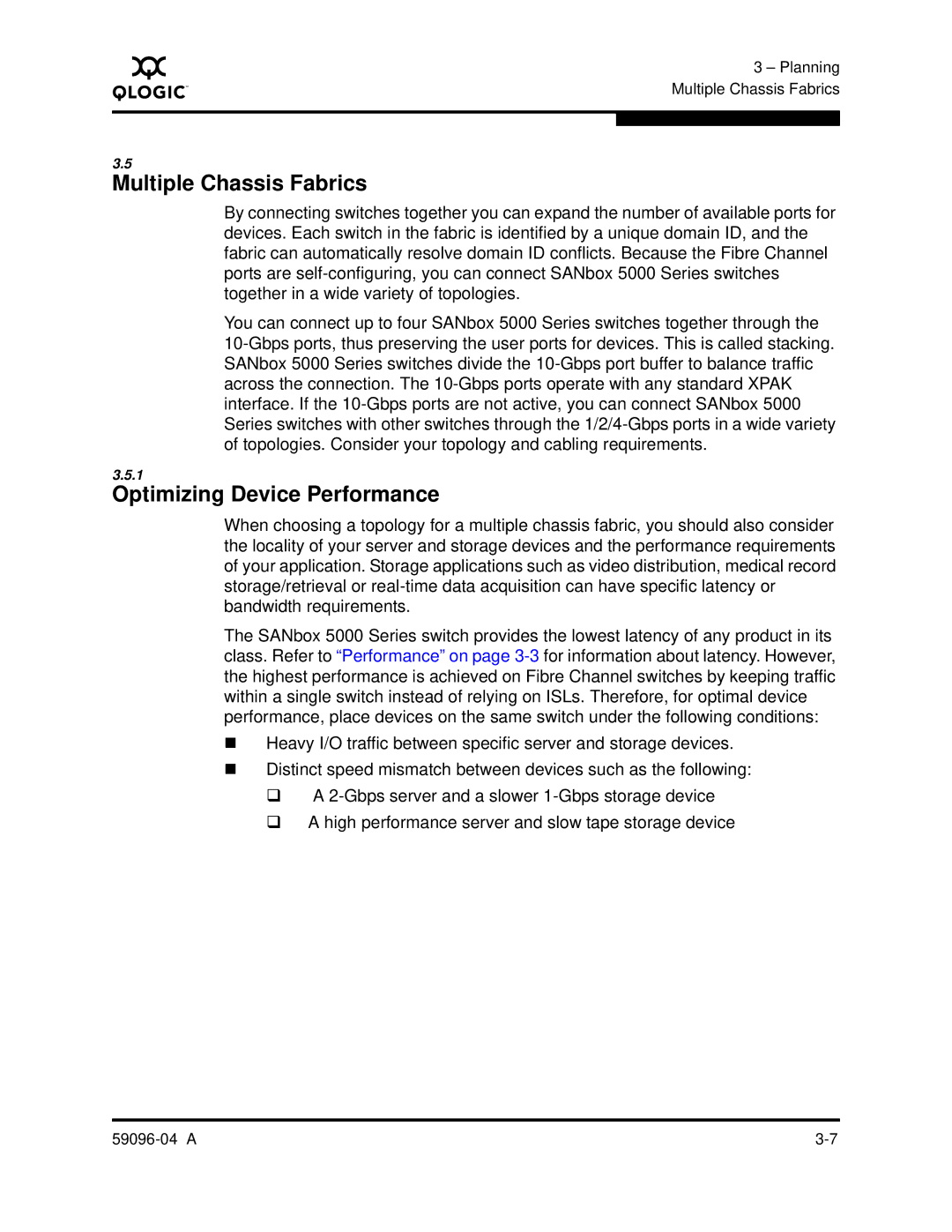
A
3 – Planning Multiple Chassis Fabrics
3.5
Multiple Chassis Fabrics
By connecting switches together you can expand the number of available ports for devices. Each switch in the fabric is identified by a unique domain ID, and the fabric can automatically resolve domain ID conflicts. Because the Fibre Channel ports are
You can connect up to four SANbox 5000 Series switches together through the
3.5.1
Optimizing Device Performance
When choosing a topology for a multiple chassis fabric, you should also consider the locality of your server and storage devices and the performance requirements of your application. Storage applications such as video distribution, medical record storage/retrieval or
The SANbox 5000 Series switch provides the lowest latency of any product in its class. Refer to “Performance” on page
Heavy I/O traffic between specific server and storage devices.
Distinct speed mismatch between devices such as the following:
A
A high performance server and slow tape storage device
